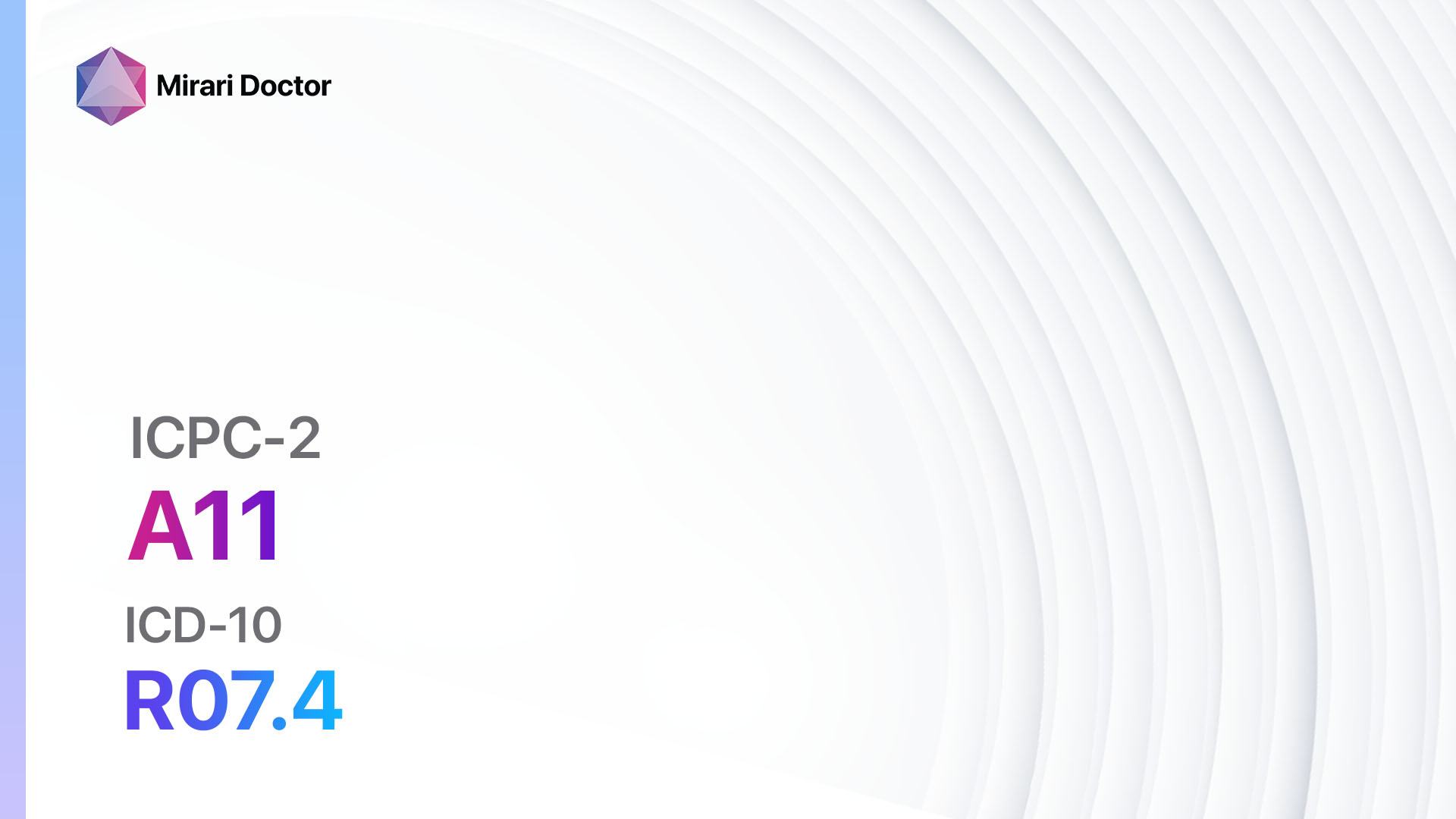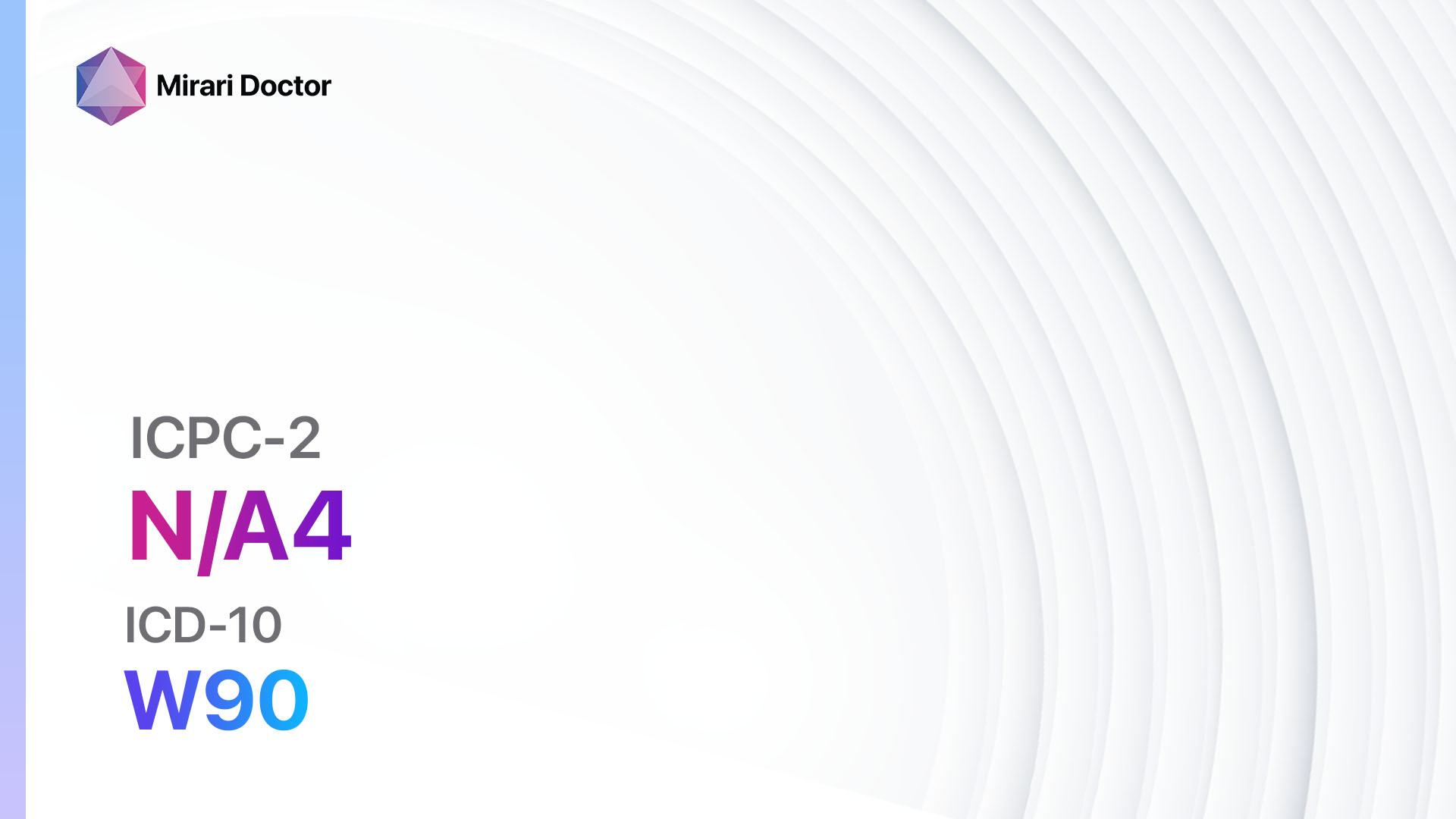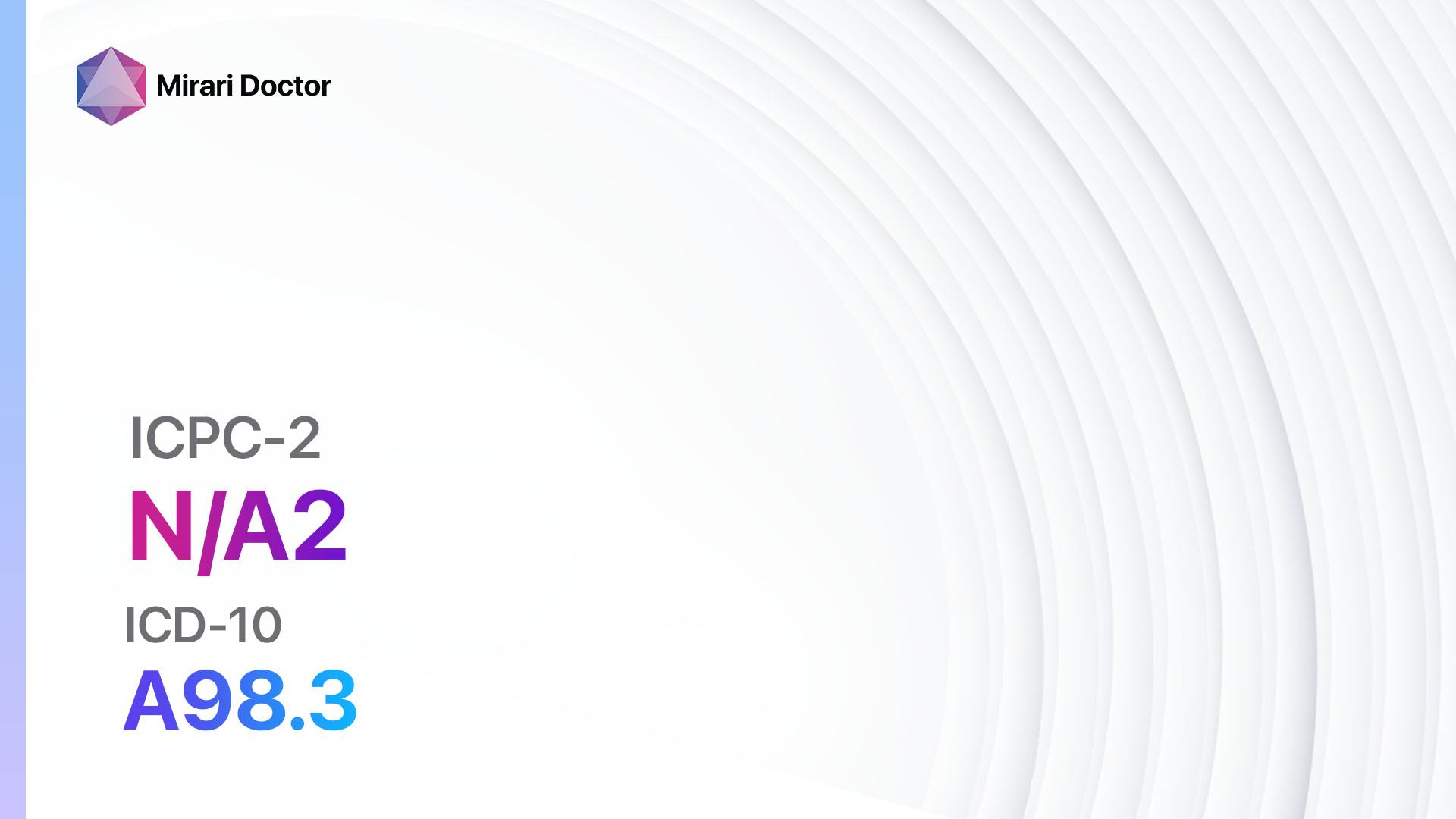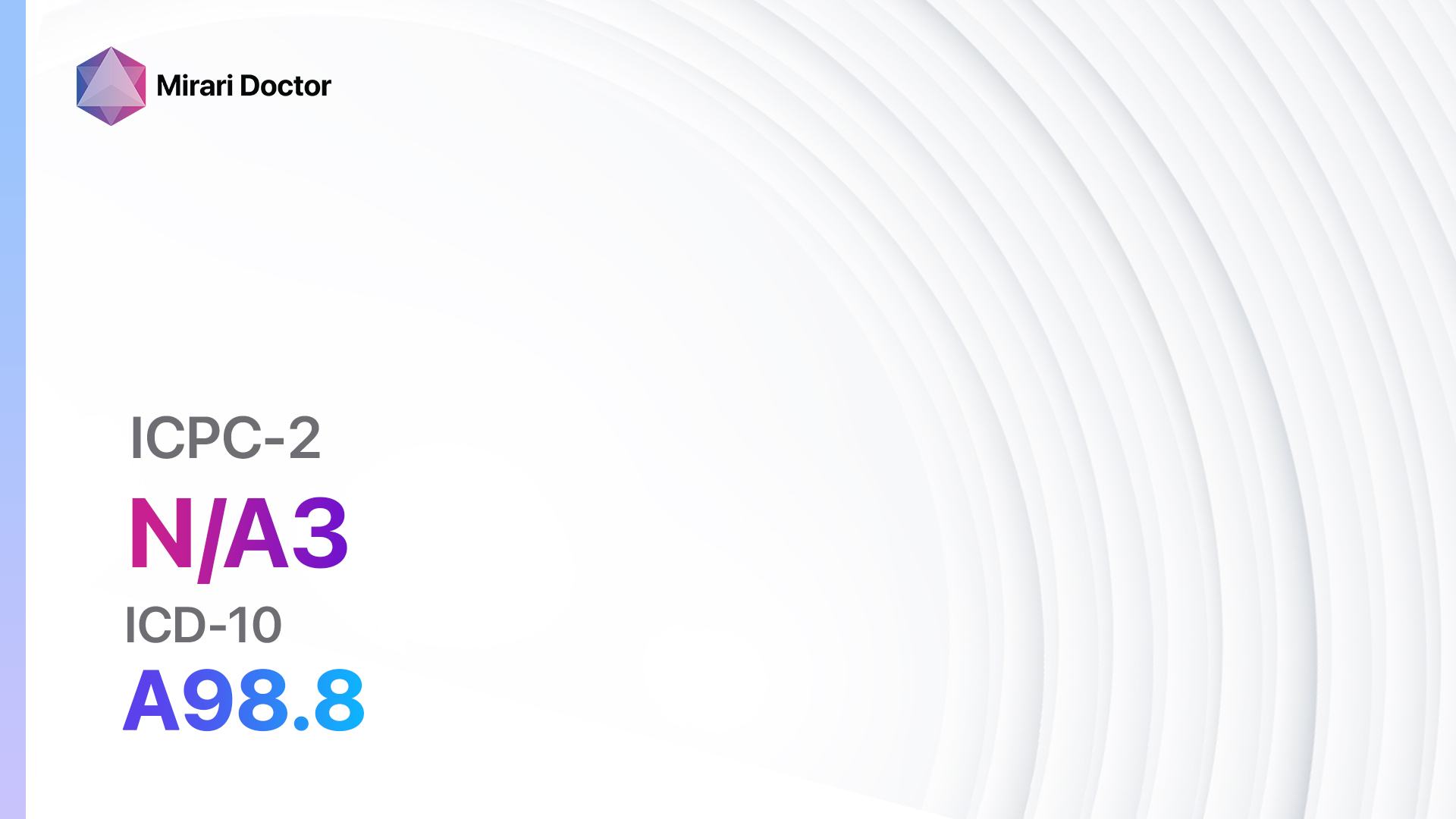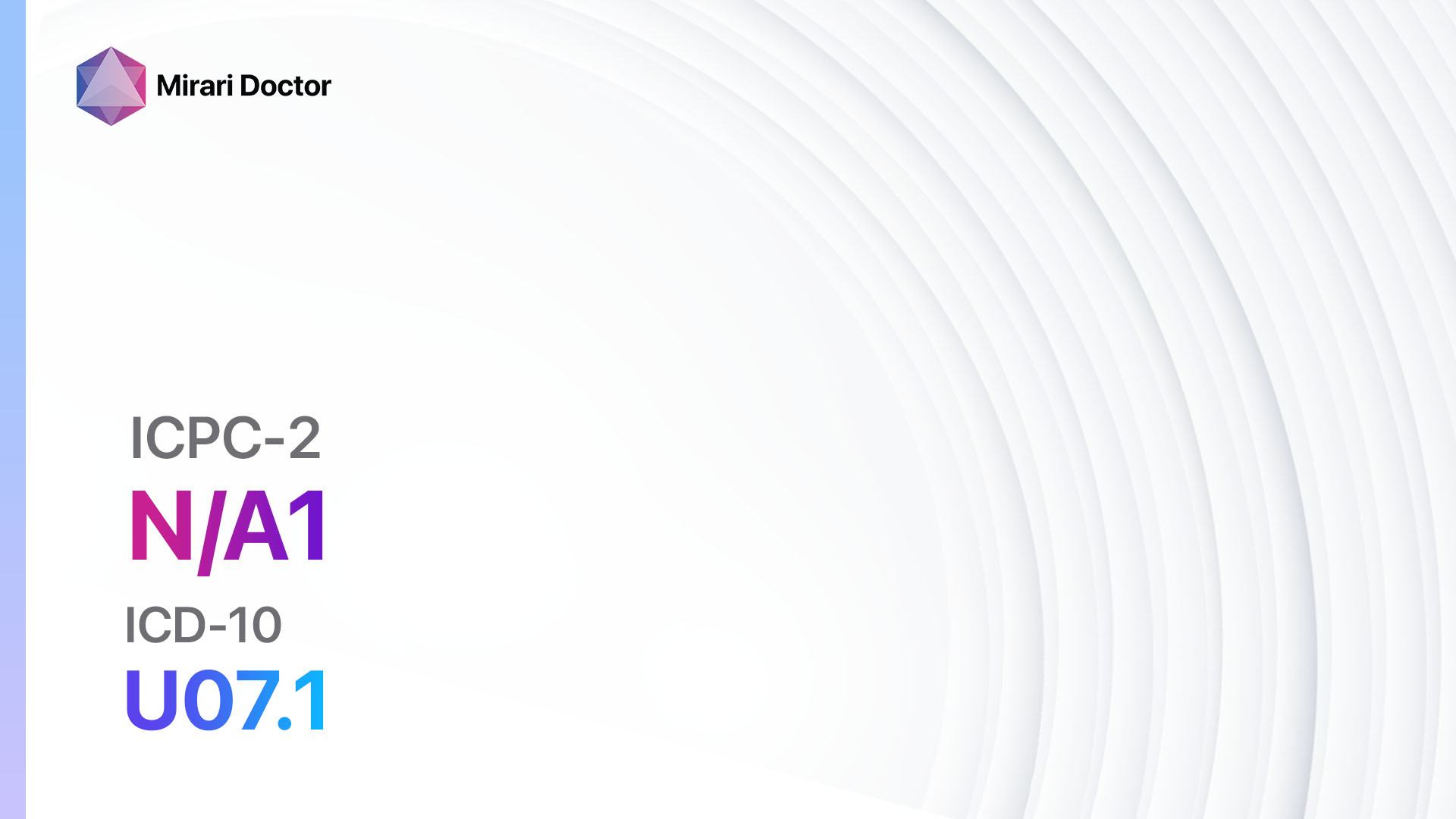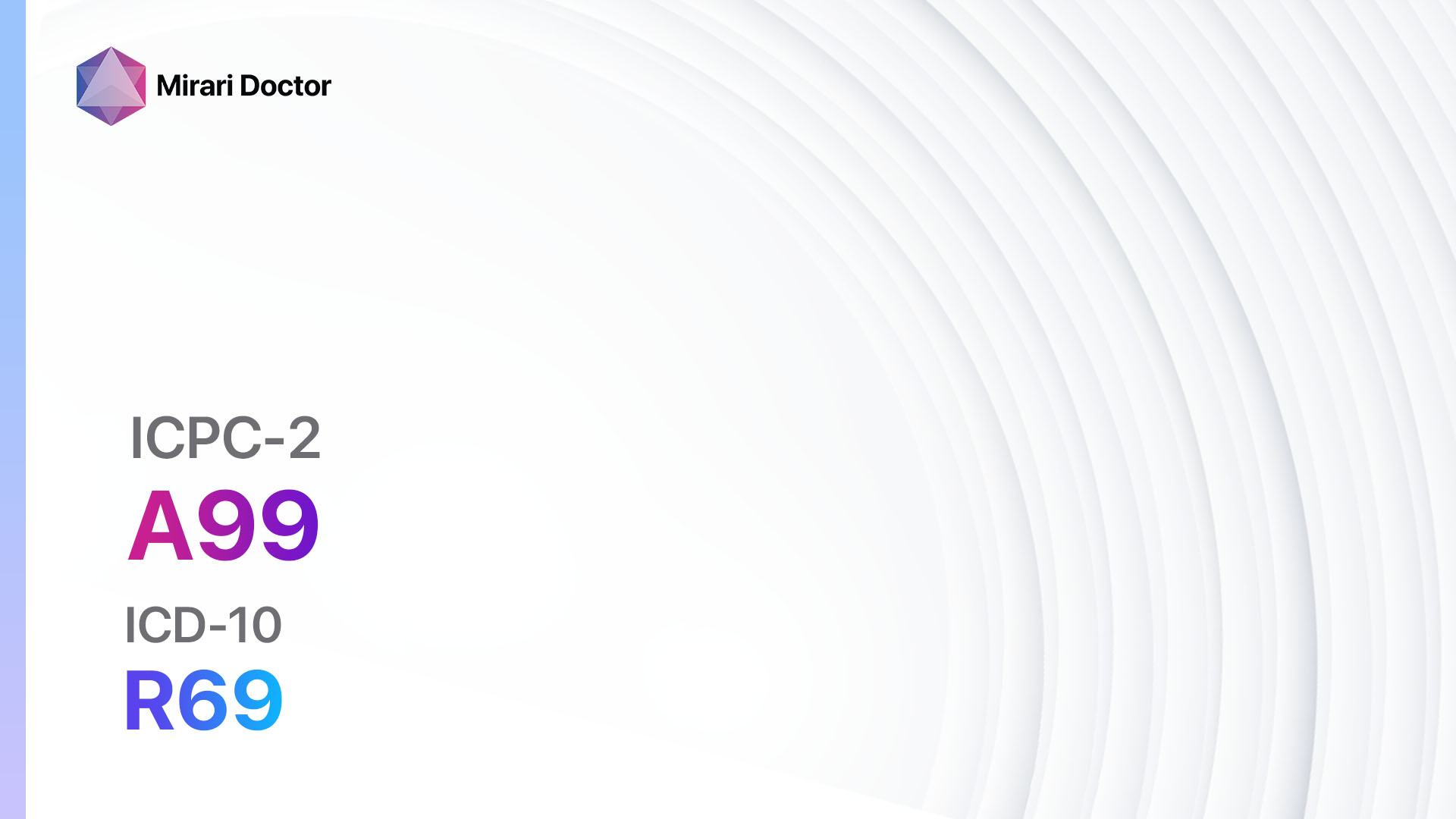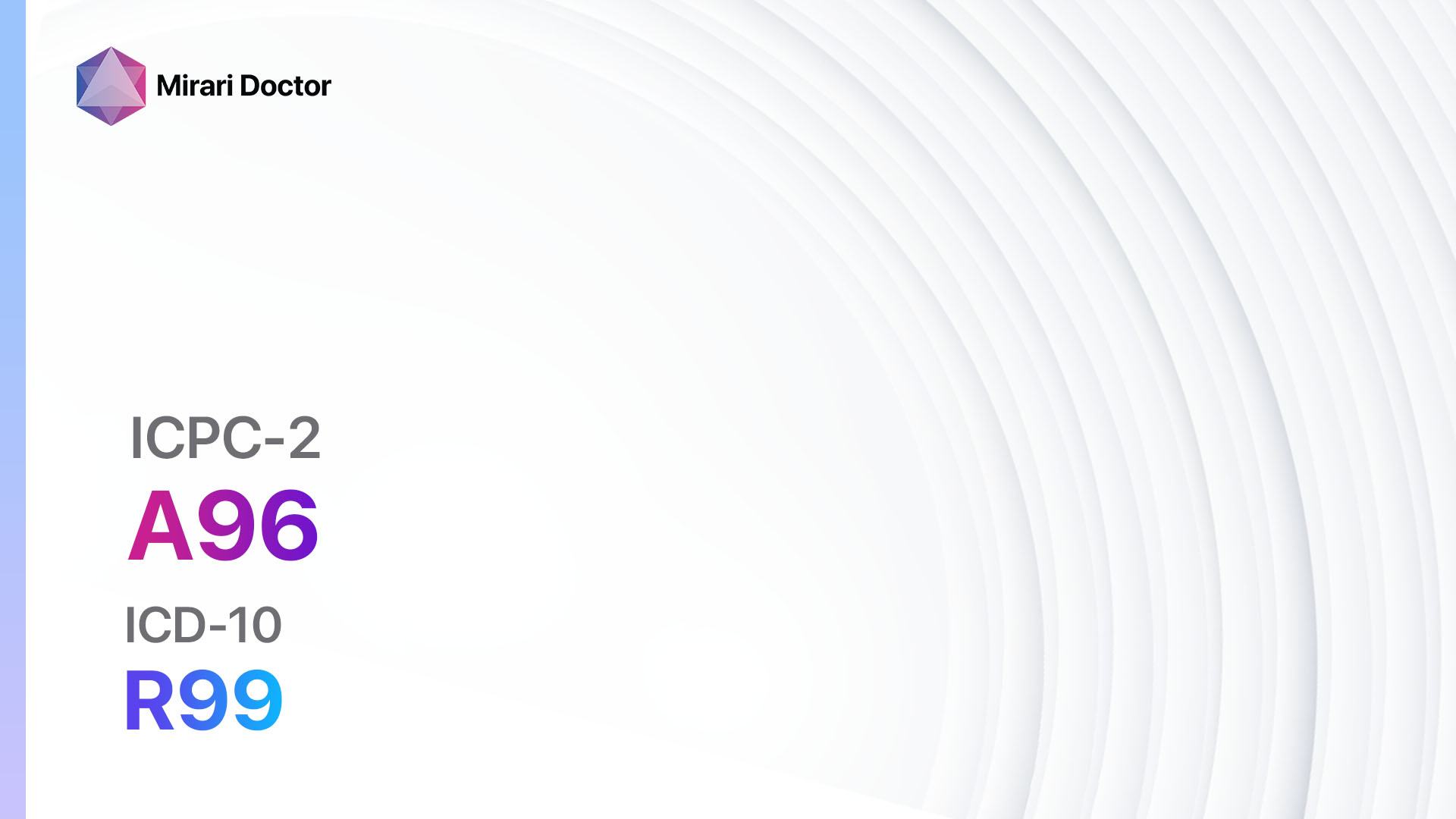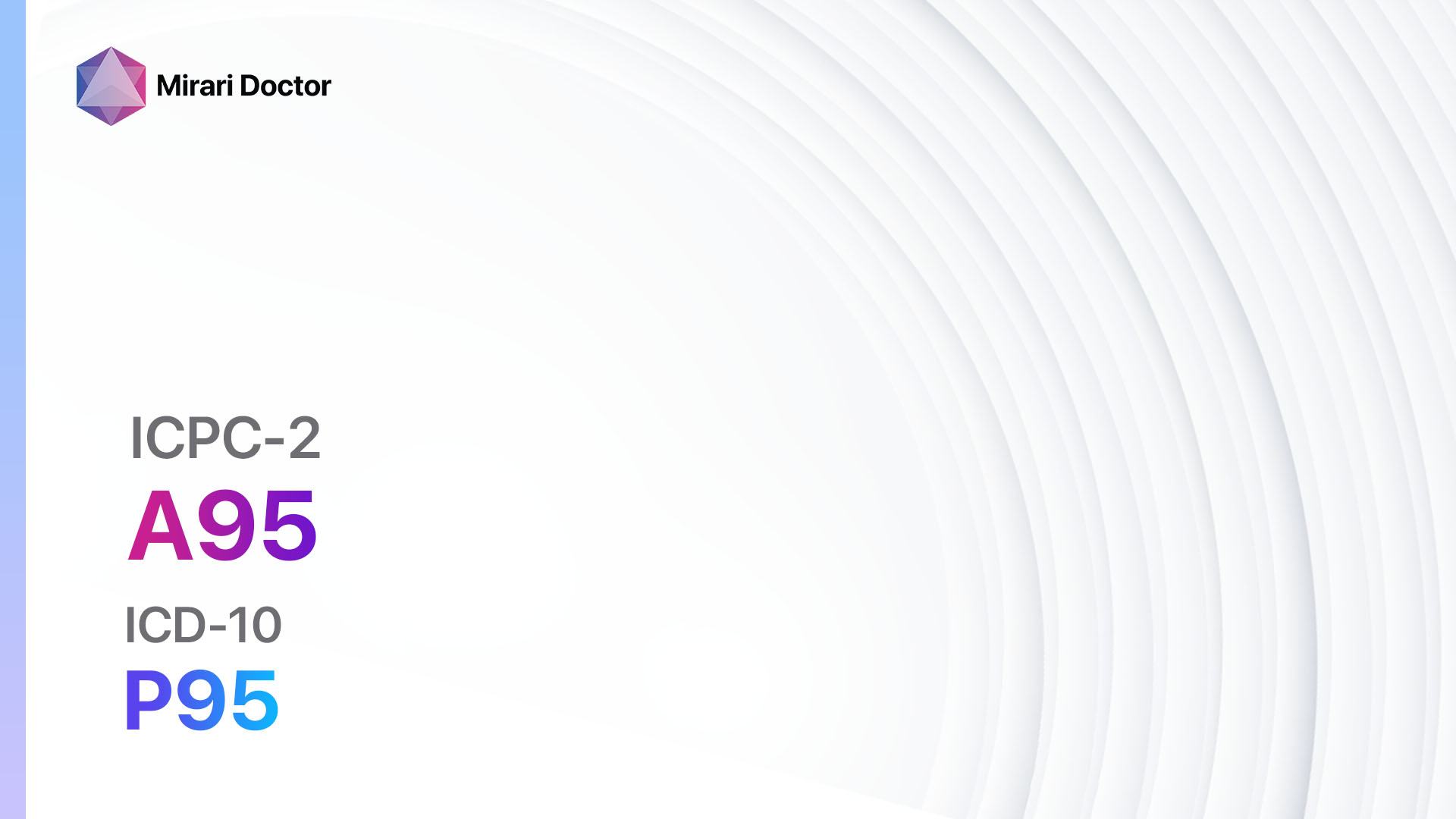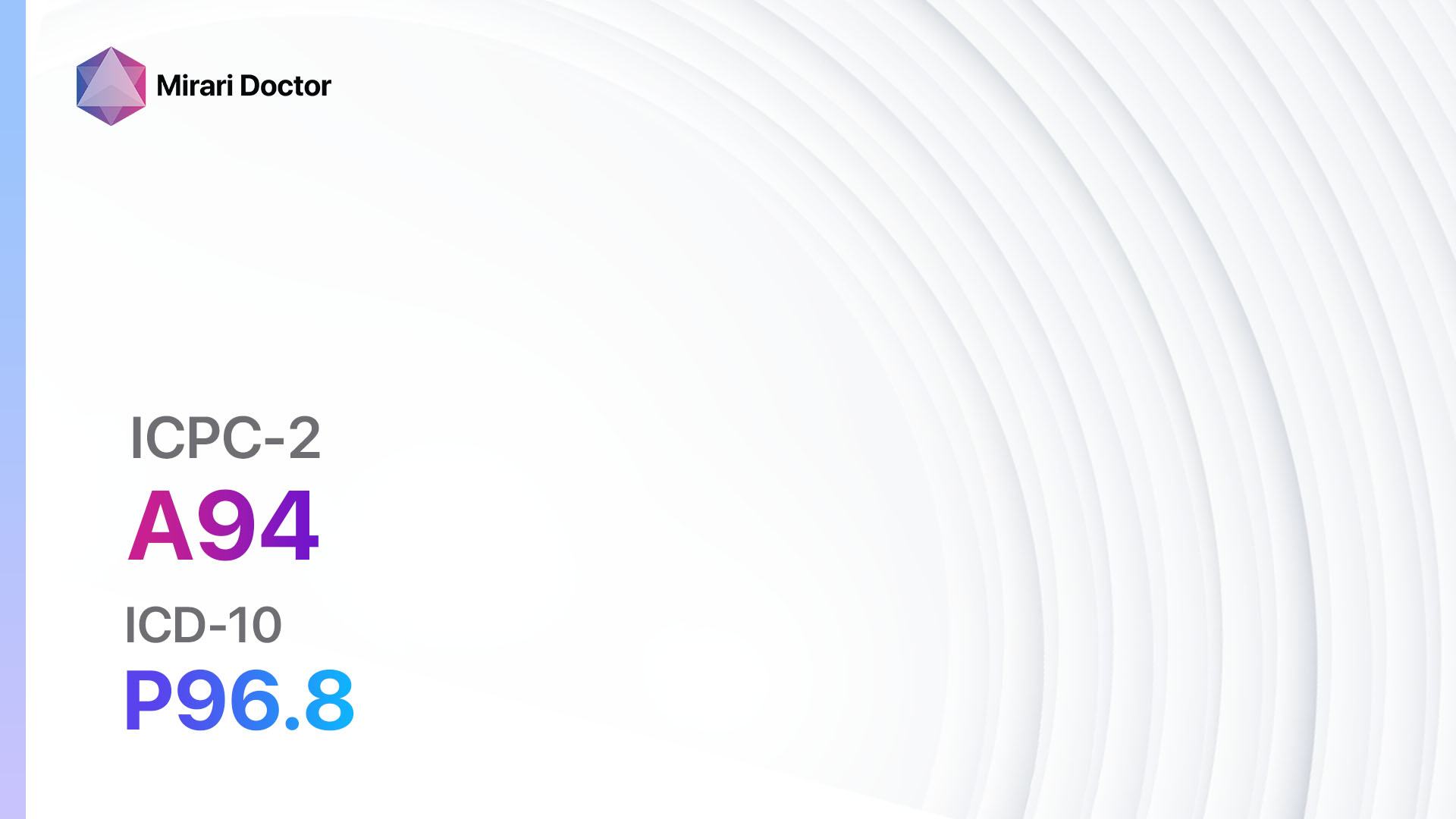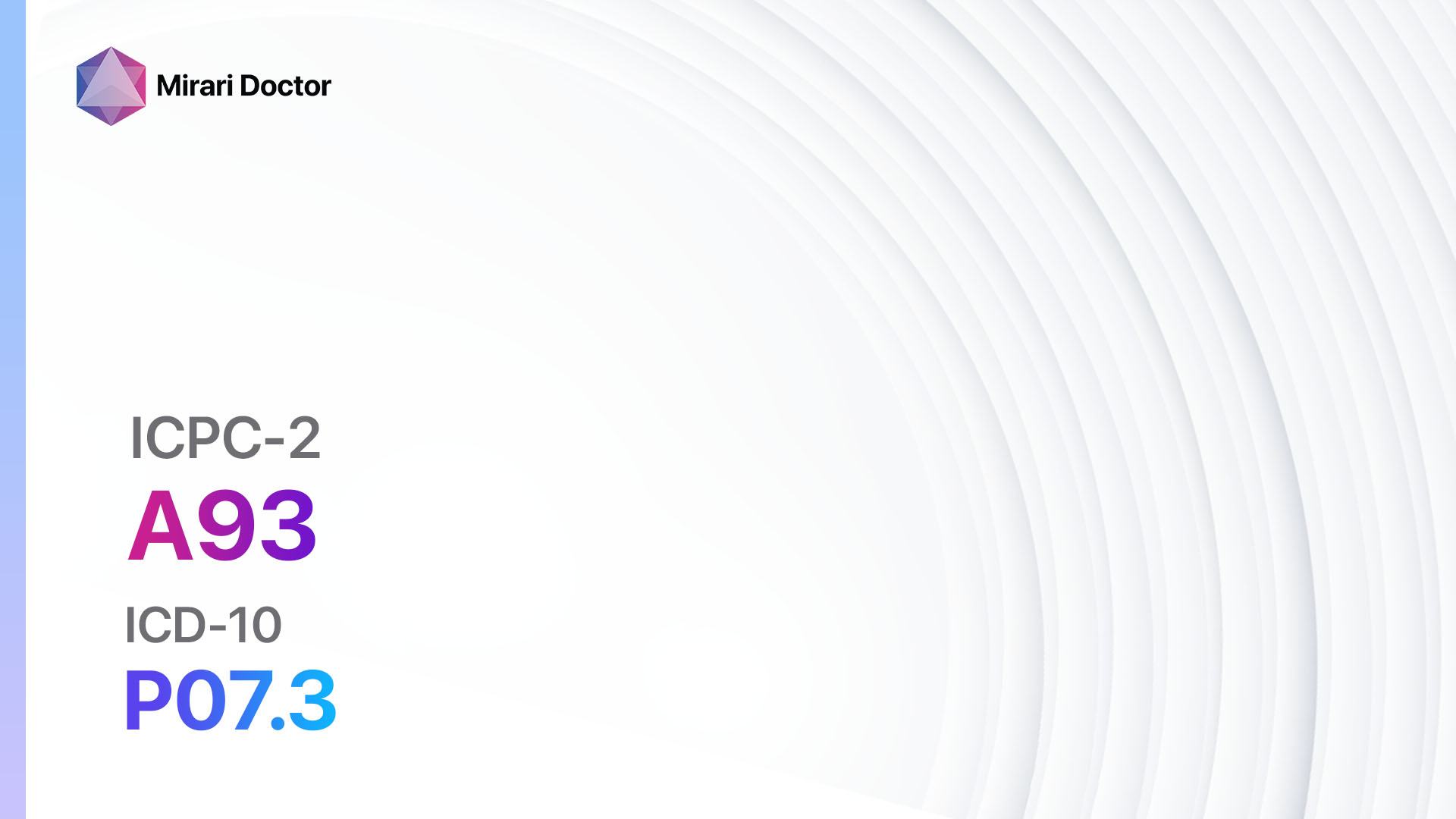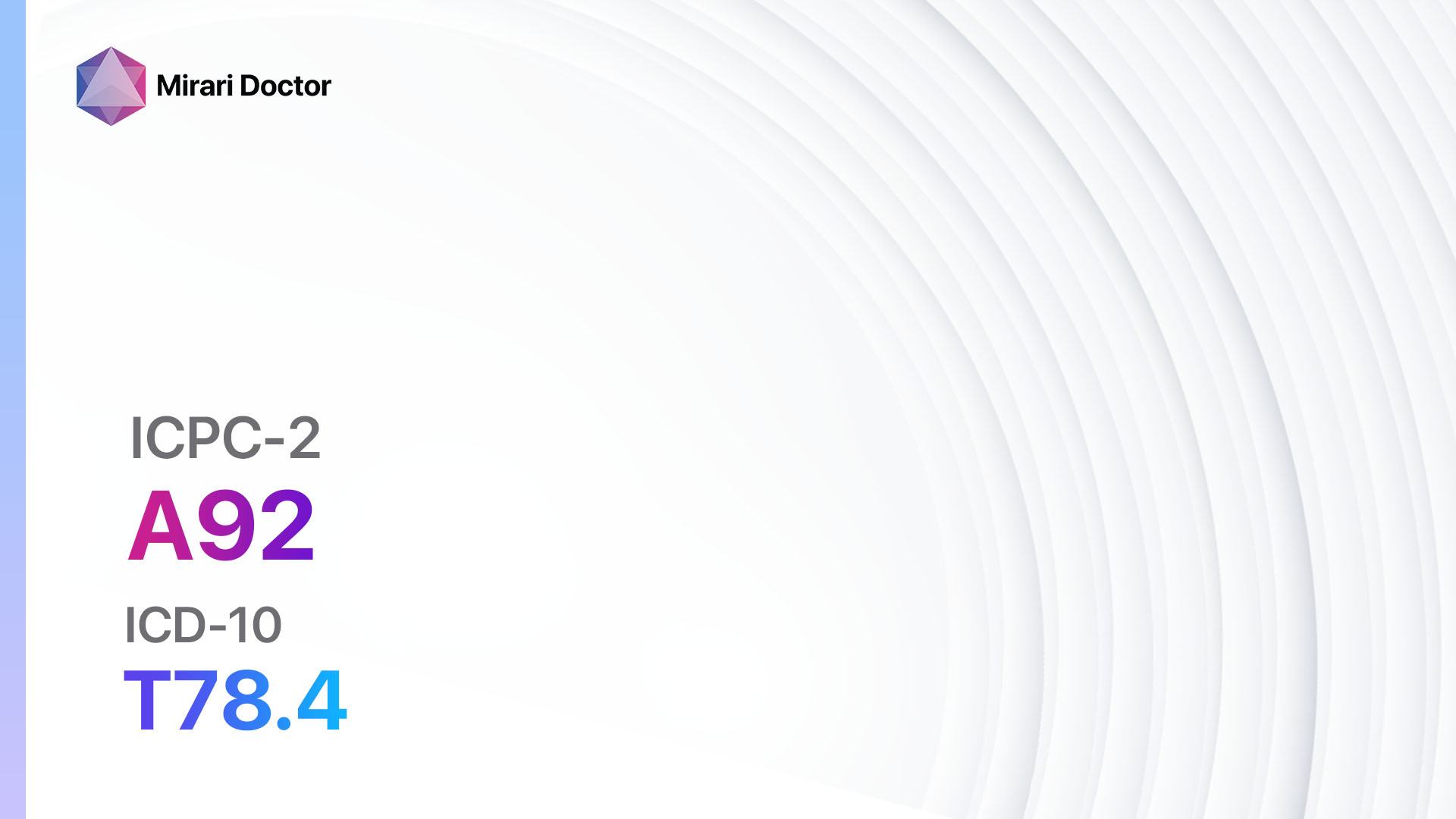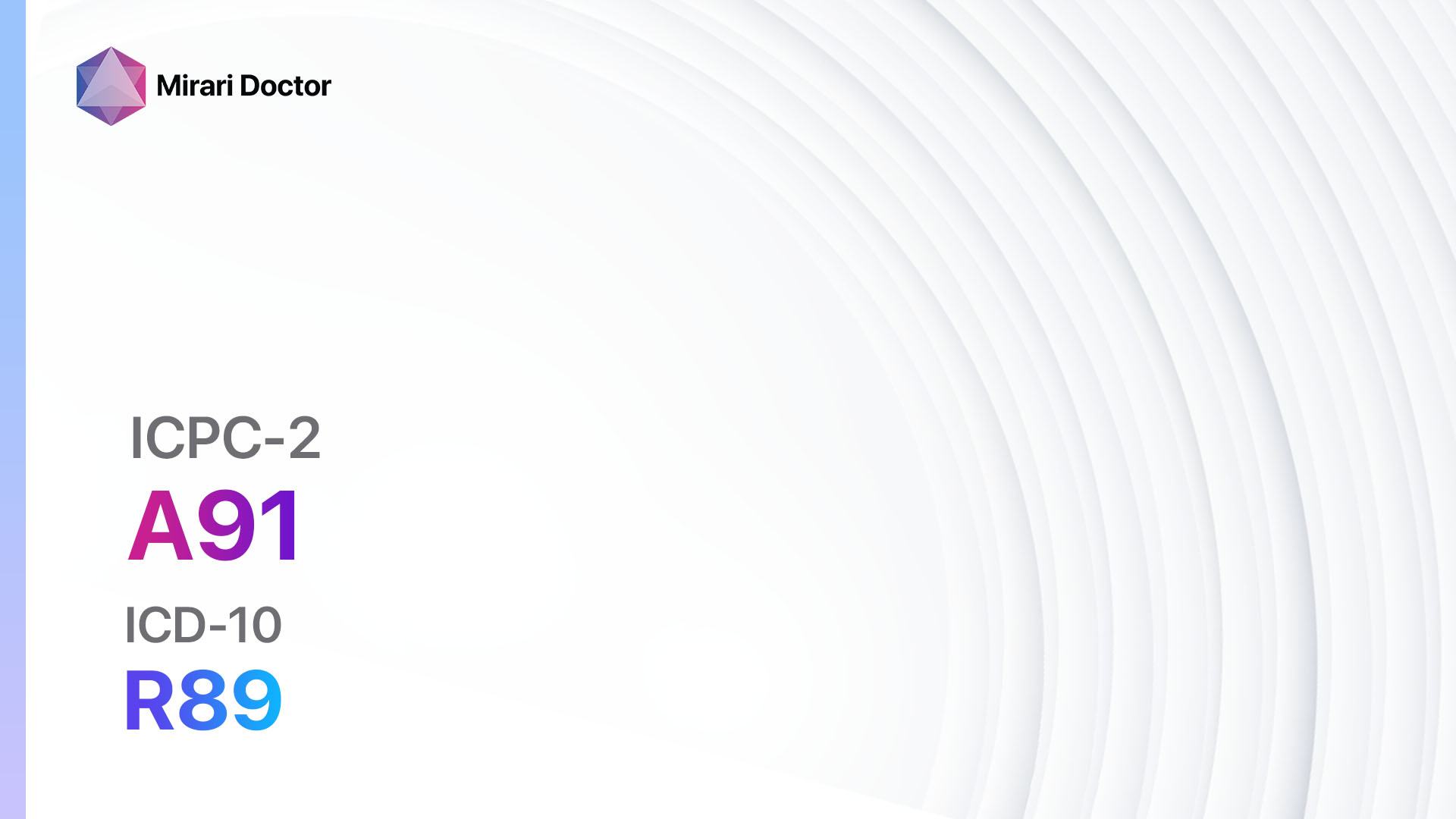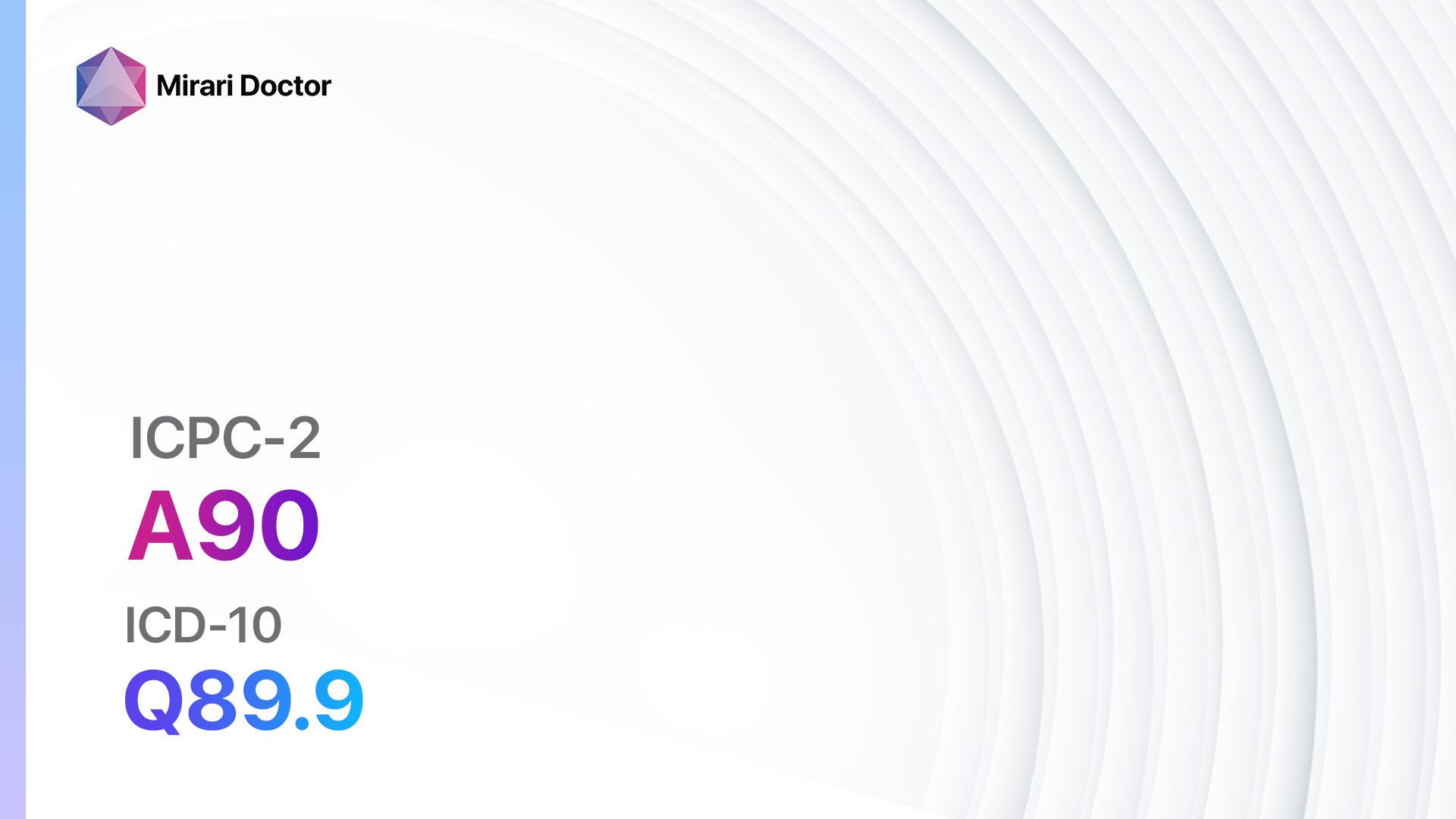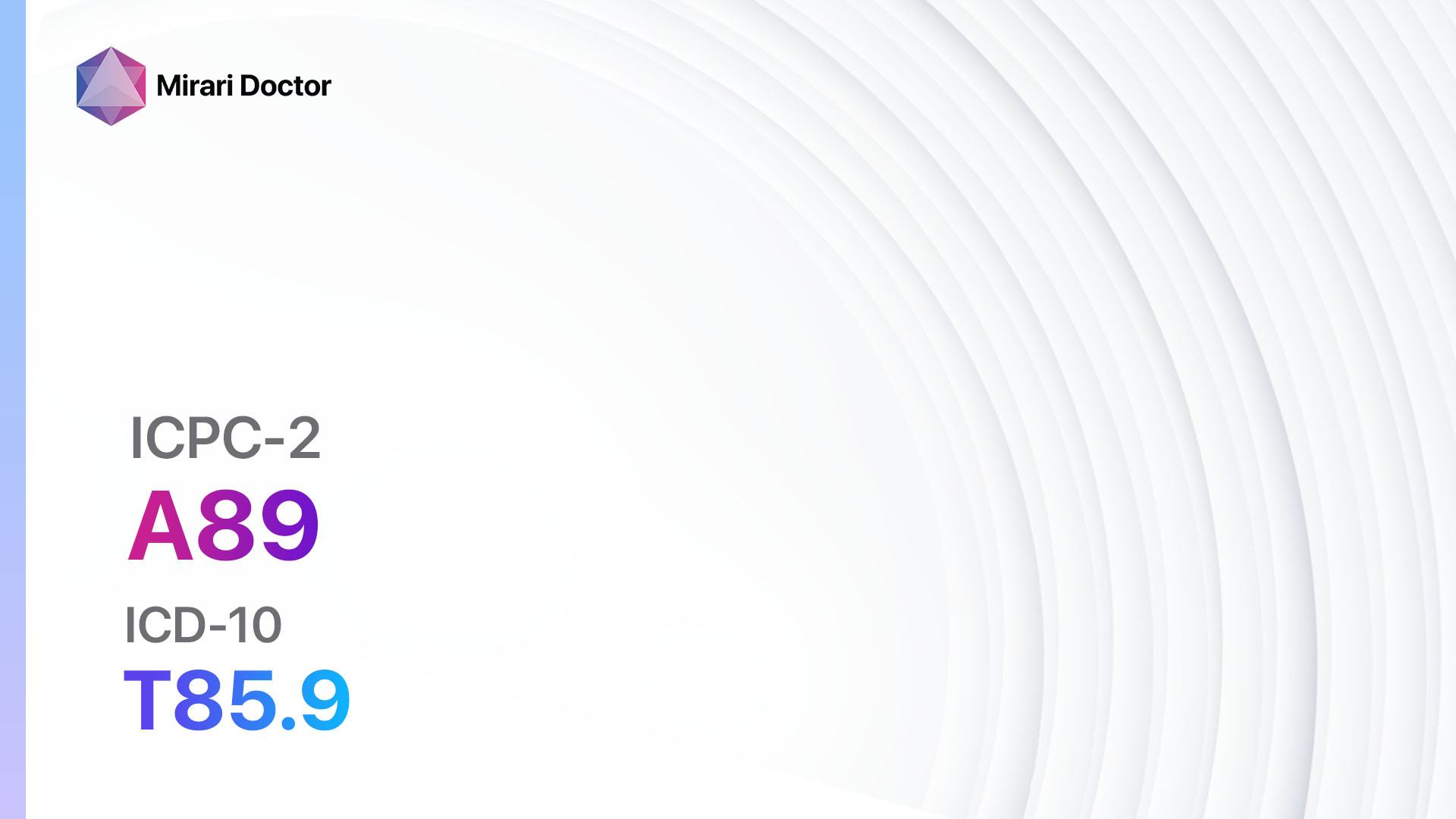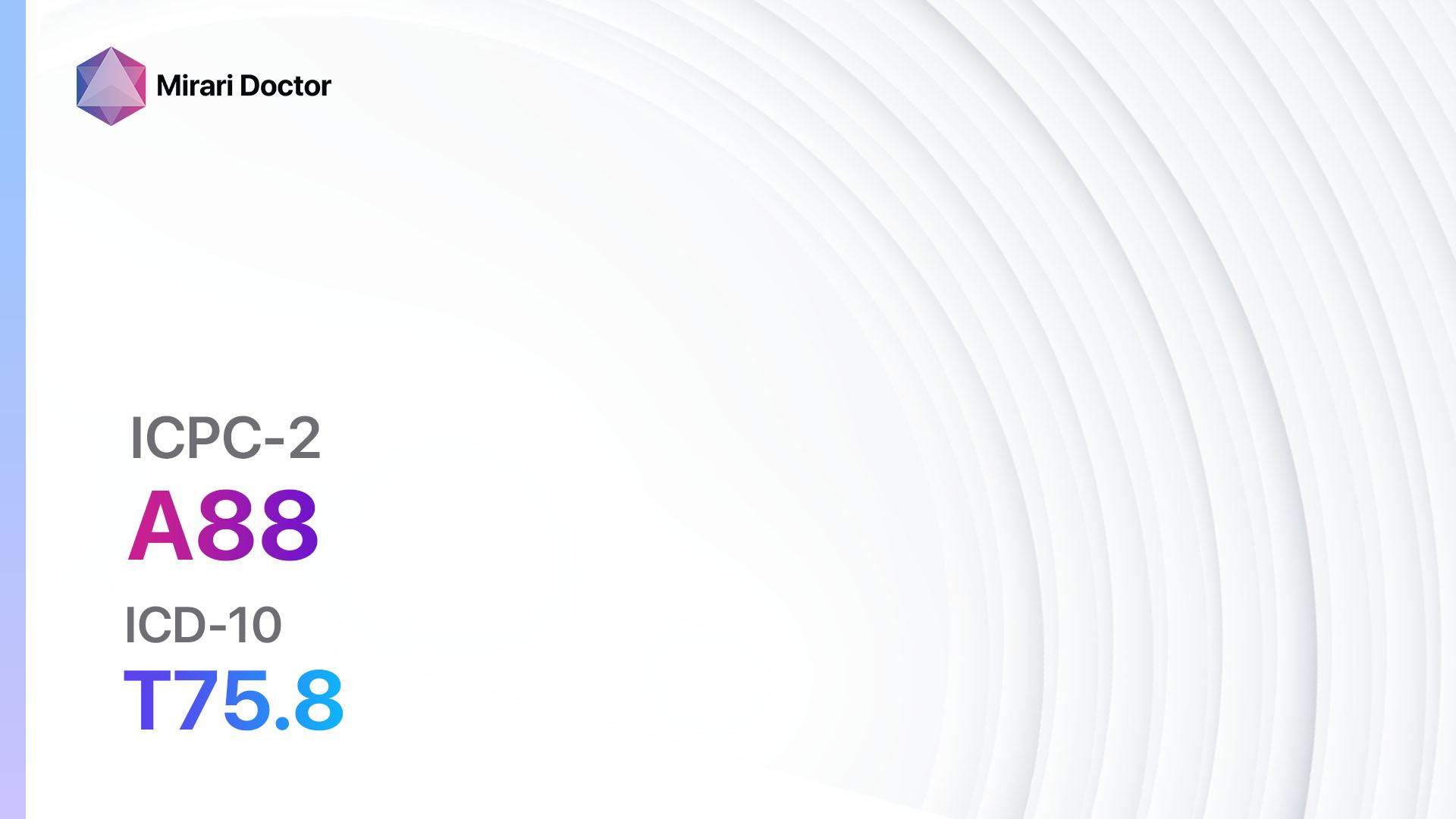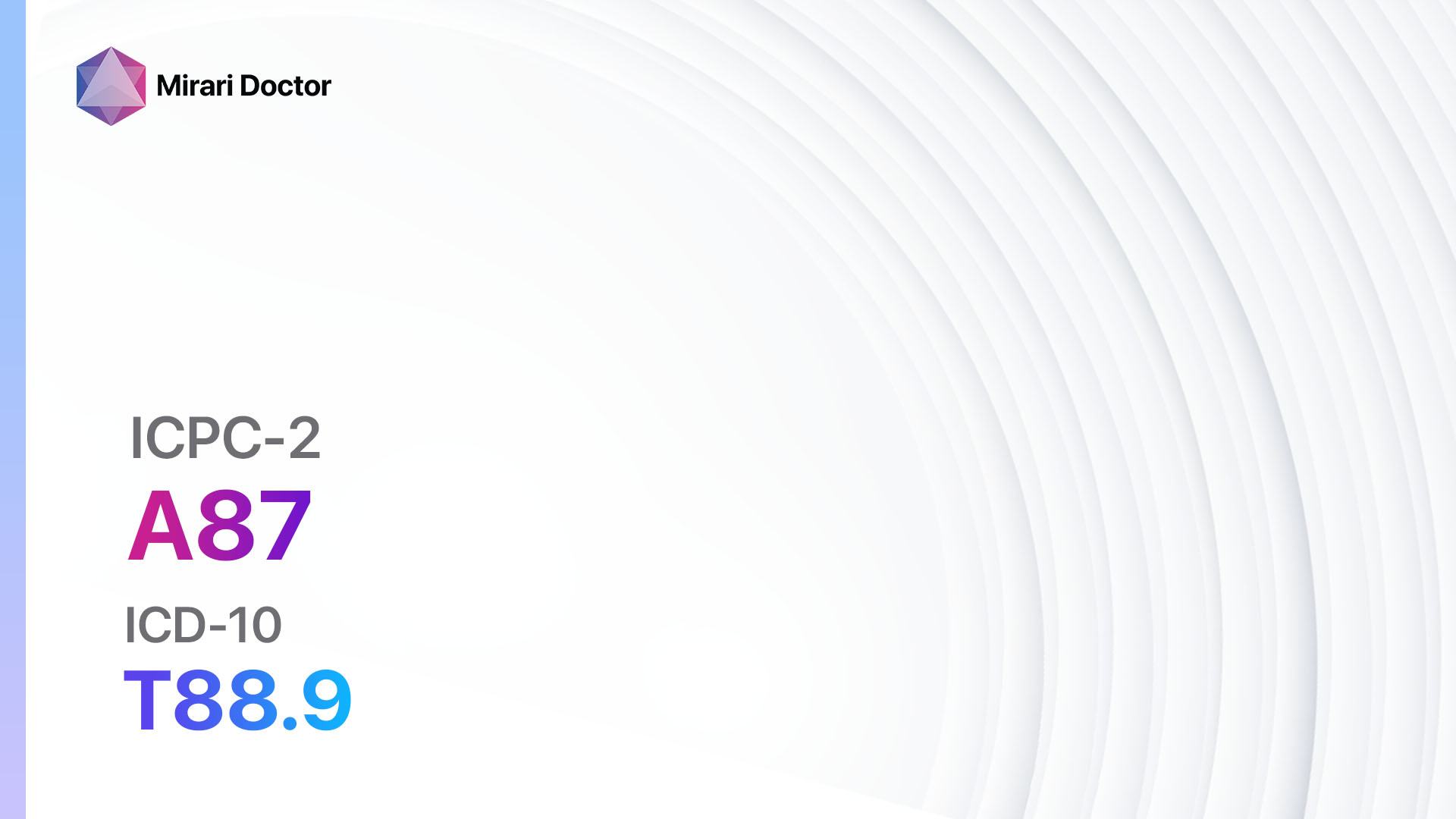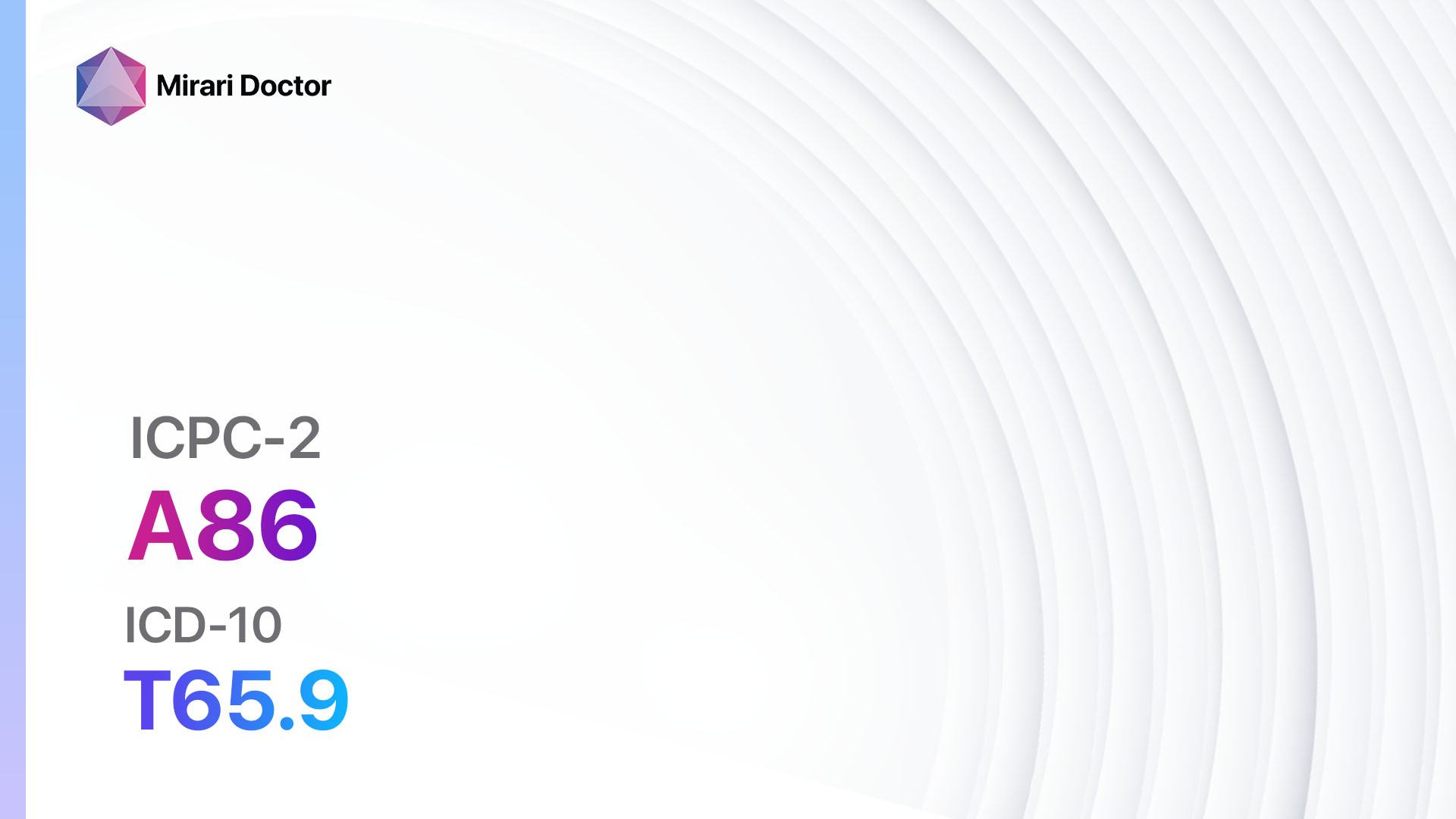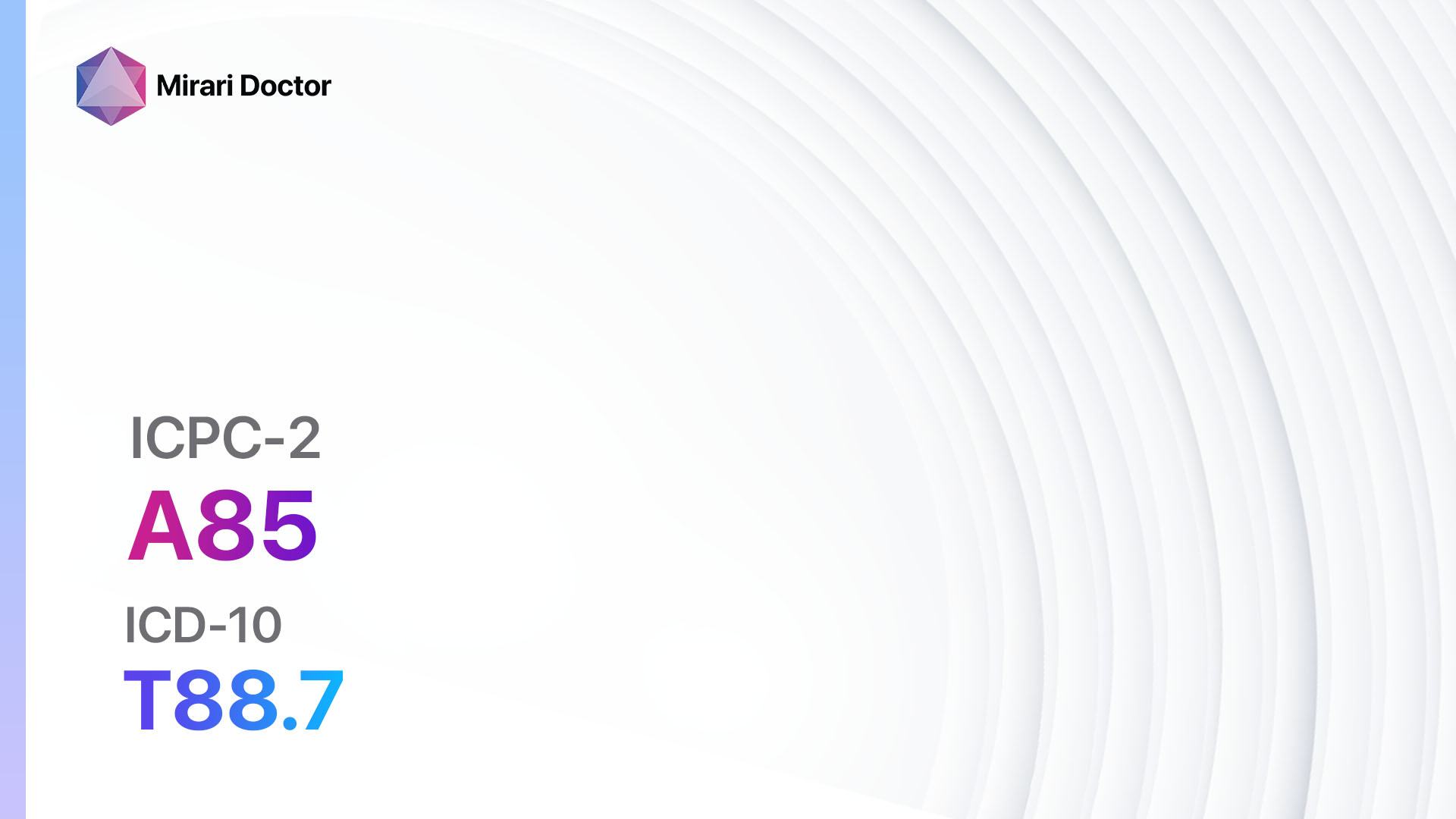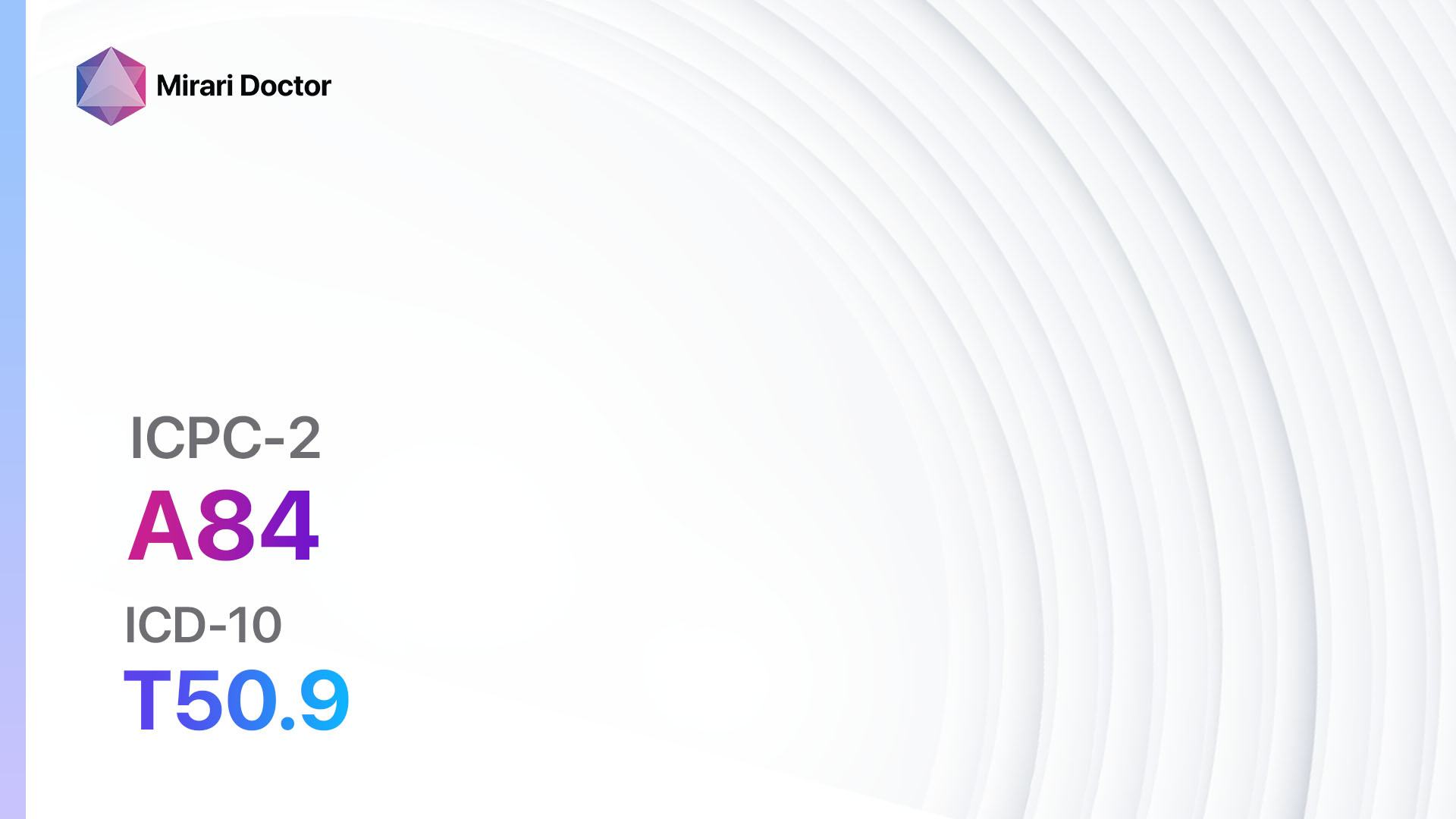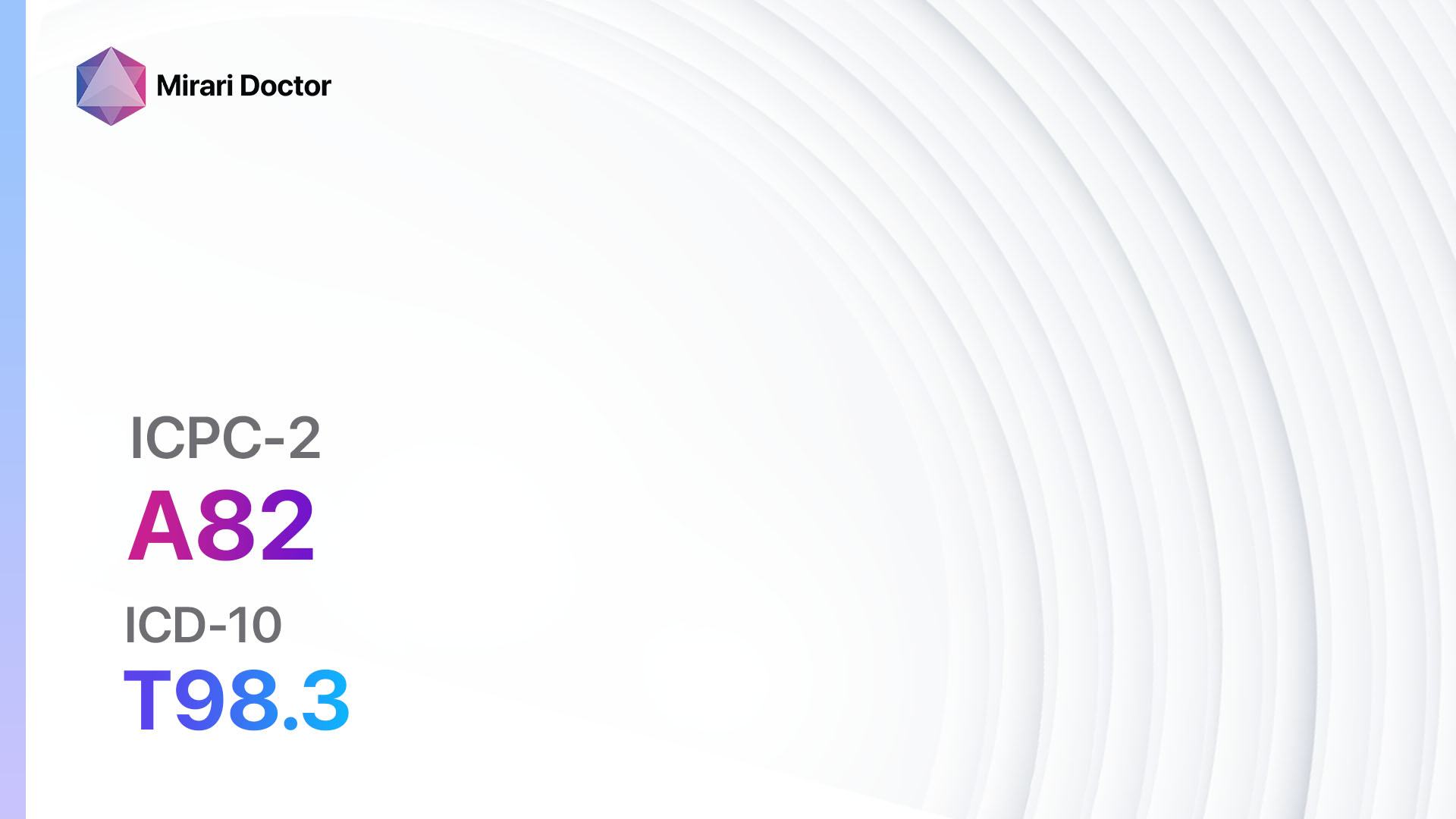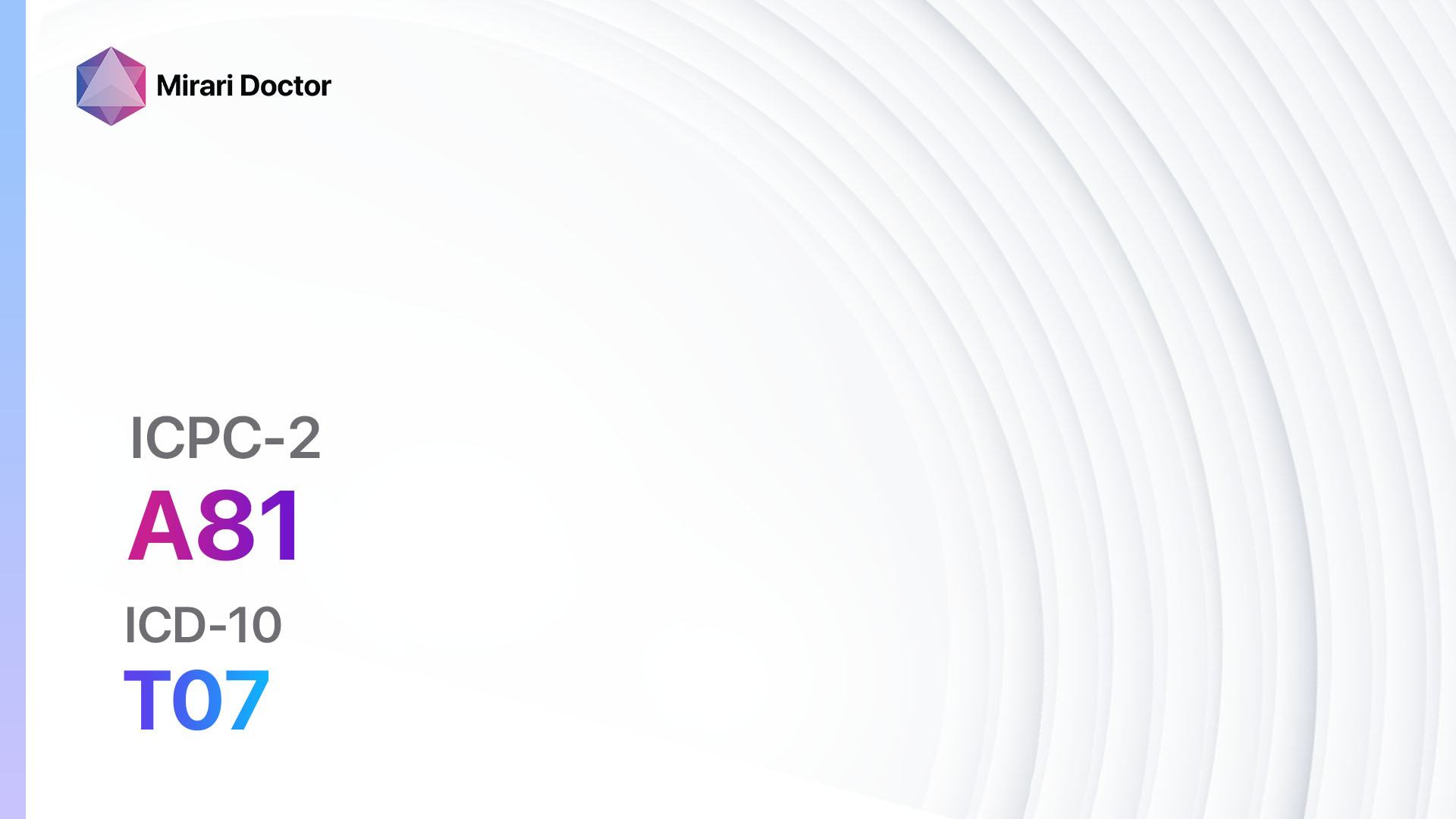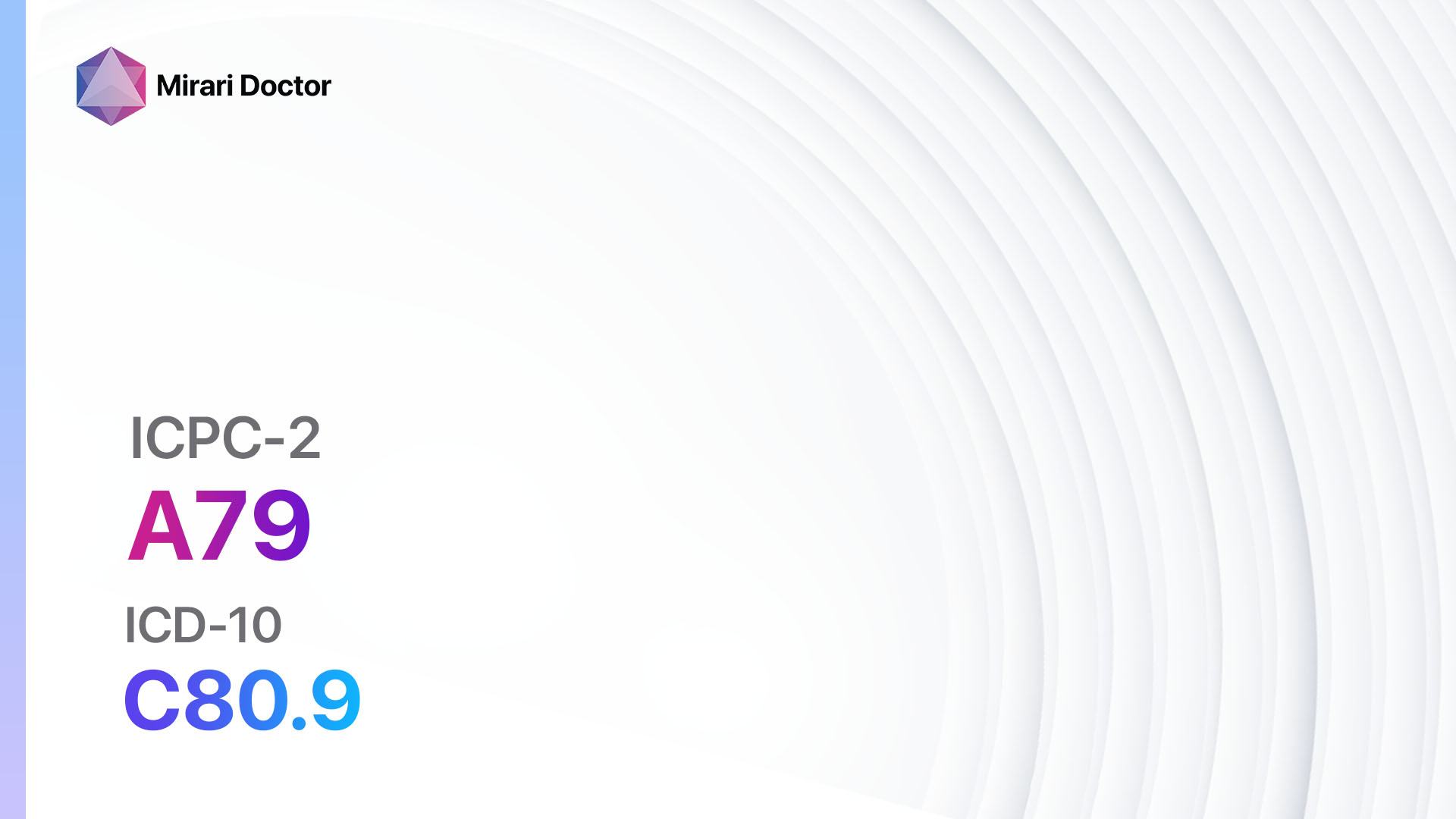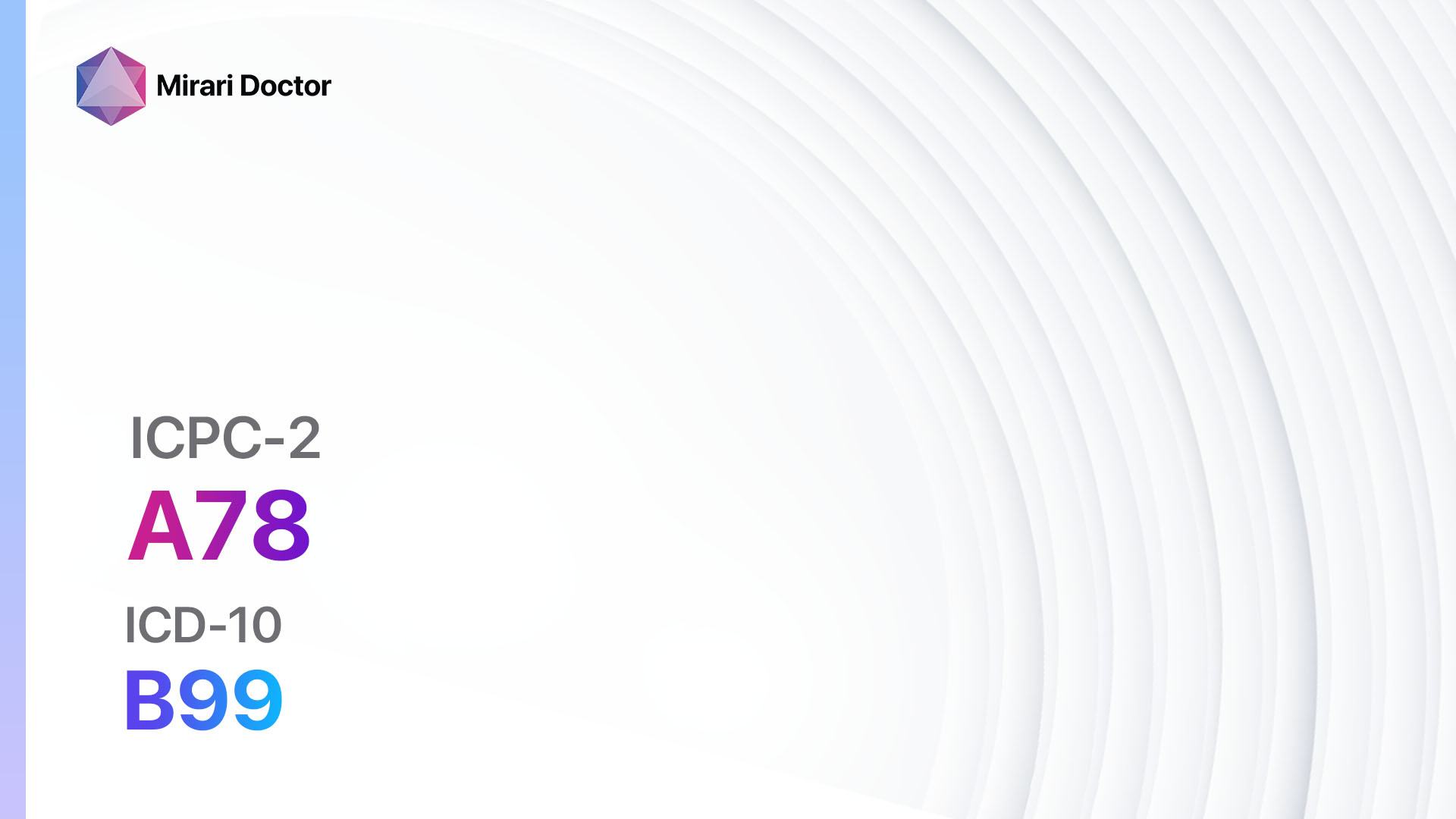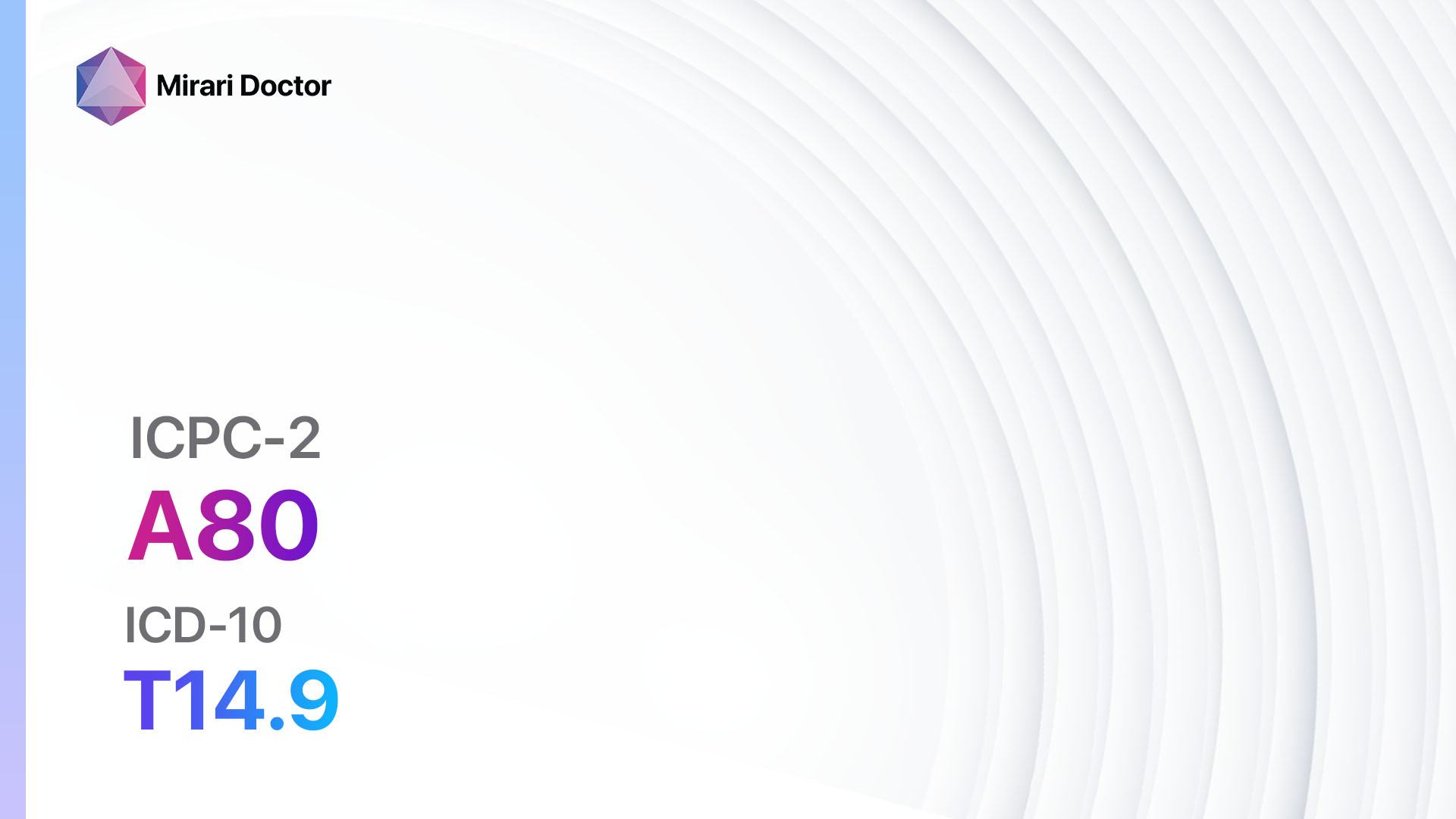
Introduction
Trauma/injury NOS refers to non-specific trauma or injury that does not fall into a specific category. It can include various types of injuries, such as fractures, sprains, strains, and contusions[1]. This guide aims to provide a comprehensive overview of the symptoms, causes, diagnostic steps, possible interventions, and follow-up care for trauma/injury NOS.
Codes
Symptoms
- Pain: Patients may experience localized or generalized pain at the site of injury[4].
- Swelling: Swelling may occur at the site of injury due to inflammation[5].
- Bruising: Discoloration of the skin may occur due to bleeding under the skin[6].
- Limited range of motion: Patients may have difficulty moving the affected body part[7].
- Tenderness: The injured area may be tender to touch[8].
- Difficulty bearing weight: Injuries to the lower extremities may cause difficulty in walking or bearing weight[9].
Causes
- Accidents: Trauma/injury NOS can result from accidents, such as falls, motor vehicle accidents, or sports-related injuries[10].
- Overuse: Repetitive movements or overuse of a specific body part can lead to trauma/injury NOS.
- Physical assault: Intentional physical harm, such as punches or kicks, can cause trauma/injury NOS.
Diagnostic Steps
Medical History
- Gather information about the mechanism of injury, including the type of accident or event that caused the trauma.
- Assess the patient’s medical history, including any pre-existing conditions that may affect the healing process or treatment options.
- Inquire about the onset and duration of symptoms, as well as any changes in symptoms over time.
Physical Examination
- Perform a thorough physical examination, including inspection, palpation, and range of motion testing of the affected body part.
- Assess for signs of swelling, bruising, deformity, or instability.
- Evaluate the patient’s ability to bear weight or perform specific movements.
Laboratory Tests
- Complete blood count (CBC): To assess for signs of infection or abnormal blood cell counts.
- Erythrocyte sedimentation rate (ESR) or C-reactive protein (CRP): To evaluate for inflammation.
- X-rays: To assess for fractures or dislocations.
- Magnetic resonance imaging (MRI): To evaluate soft tissue injuries, such as ligament or tendon tears.
Diagnostic Imaging
- X-rays: Useful for evaluating fractures, dislocations, or bony abnormalities.
- Ultrasound: Can be used to assess soft tissue injuries, such as muscle or tendon tears.
- CT scans: Provide detailed images of bones, joints, and soft tissues.
- MRI: Useful for evaluating ligament or tendon injuries, as well as soft tissue abnormalities.
Other Tests
- Arthroscopy: A minimally invasive procedure that allows direct visualization of joint structures.
- Electromyography (EMG): Measures electrical activity in muscles to assess for nerve damage or muscle dysfunction.
- Biopsy: In some cases, a biopsy may be necessary to evaluate for underlying pathology or infection.
Follow-up and Patient Education
- Provide instructions for at-home care, including rest, ice, compression, and elevation (RICE) for acute injuries.
- Educate patients on the importance of following prescribed treatment plans and attending follow-up appointments.
- Discuss the expected timeline for recovery and any potential complications or warning signs to watch for.
Possible Interventions
Traditional Interventions
Medications:
Top 5 drugs for Trauma/injury NOS:
- Nonsteroidal anti-inflammatory drugs (NSAIDs) (e.g., Ibuprofen, Naproxen):
- Cost: Generic versions can be $3-$20/month.
- Contraindications: History of gastrointestinal bleeding, renal impairment.
- Side effects: Upset stomach, gastrointestinal ulcers.
- Severe side effects: Gastrointestinal bleeding, kidney damage.
- Drug interactions: Anticoagulants, corticosteroids.
- Warning: Prolonged use may increase the risk of cardiovascular events.
- Acetaminophen:
- Cost: Generic versions can be $3-$10/month.
- Contraindications: Severe liver disease.
- Side effects: Rare at therapeutic doses.
- Severe side effects: Liver toxicity (with overdose).
- Drug interactions: Alcohol, other medications containing acetaminophen.
- Warning: Avoid exceeding the recommended daily dose.
- Opioids (e.g., Oxycodone, Hydrocodone):
- Cost: Generic versions can be $10-$50/month.
- Contraindications: Respiratory depression, history of substance abuse.
- Side effects: Sedation, constipation.
- Severe side effects: Respiratory depression, addiction.
- Drug interactions: Benzodiazepines, alcohol.
- Warning: Use with caution due to the risk of addiction and overdose.
- Muscle relaxants (e.g., Cyclobenzaprine, Methocarbamol):
- Cost: Generic versions can be $10-$30/month.
- Contraindications: Glaucoma, urinary retention.
- Side effects: Drowsiness, dry mouth.
- Severe side effects: Severe allergic reactions, liver toxicity.
- Drug interactions: Sedatives, alcohol.
- Warning: Avoid driving or operating heavy machinery while taking muscle relaxants.
- Topical analgesics (e.g., Lidocaine patches, Capsaicin cream):
- Cost: Lidocaine patches can range from $10-$100/month.
- Contraindications: Allergy to local anesthetics.
- Side effects: Local skin reactions, irritation.
- Severe side effects: Rare, but may include systemic absorption and toxicity.
- Drug interactions: None significant.
- Warning: Follow instructions for proper application and avoid contact with eyes or mucous membranes.
Alternative Drugs:
- Gabapentin: May be used for neuropathic pain associated with trauma/injury NOS.
- Tricyclic antidepressants (e.g., Amitriptyline): Can be effective for chronic pain management.
- Steroid injections: May be considered for localized inflammation or pain relief.
- Antidepressants: Can be used for pain management and mood stabilization in patients with chronic pain.
Surgical Procedures:
- Fracture fixation: Surgical repair of fractures using plates, screws, or rods. Cost: $5,000 to $20,000.
- Arthroscopic surgery: Minimally invasive procedure to repair or remove damaged tissue in joints. Cost: $5,000 to $15,000.
- Ligament or tendon repair: Surgical repair of torn ligaments or tendons. Cost: $5,000 to $15,000.
- Joint replacement: Surgical replacement of damaged joints with artificial implants. Cost: $20,000 to $50,000.
- Nerve decompression: Surgical procedure to relieve pressure on compressed nerves. Cost: $5,000 to $15,000.
Alternative Interventions
- Physical therapy: Helps improve strength, flexibility, and range of motion. Cost: $50-$150 per session.
- Chiropractic care: Manipulation of the spine and joints to alleviate pain and improve function. Cost: $50-$200 per session.
- Massage therapy: Manual manipulation of soft tissues to reduce pain and promote relaxation. Cost: $60-$120 per session.
- Acupuncture: May help reduce pain and promote healing. Cost: $60-$120 per session.
- Cold laser therapy: Uses low-level laser light to reduce pain and inflammation. Cost: $50-$100 per session.
Lifestyle Interventions
- Rest and ice: Resting the injured area and applying ice packs can help reduce pain and swelling.
- Compression: Using compression bandages or wraps can help control swelling and provide support.
- Elevation: Elevating the injured area above heart level can help reduce swelling.
- Physical activity modification: Avoiding activities that exacerbate pain or further injure the affected area.
- Weight management: Maintaining a healthy weight can reduce stress on joints and improve overall function.
It is important to note that the cost ranges provided are approximate and may vary depending on the location and availability of the interventions.
Mirari Cold Plasma Alternative Intervention
Understanding Mirari Cold Plasma
- Safe and Non-Invasive Treatment: Mirari Cold Plasma is a safe and non-invasive treatment option for various skin conditions. It does not require incisions, minimizing the risk of scarring, bleeding, or tissue damage.
- Efficient Extraction of Foreign Bodies: Mirari Cold Plasma facilitates the removal of foreign bodies from the skin by degrading and dissociating organic matter, allowing easier access and extraction.
- Pain Reduction and Comfort: Mirari Cold Plasma has a local analgesic effect, providing pain relief during the treatment, making it more comfortable for the patient.
- Reduced Risk of Infection: Mirari Cold Plasma has antimicrobial properties, effectively killing bacteria and reducing the risk of infection.
- Accelerated Healing and Minimal Scarring: Mirari Cold Plasma stimulates wound healing and tissue regeneration, reducing healing time and minimizing the formation of scars.
Mirari Cold Plasma Prescription
Video instructions for using Mirari Cold Plasma Device – A80 Trauma/injury NOS (ICD-10:T14.9)
| Mild | Moderate | Severe |
| Mode setting: 1 (Infection) Location: 0 (Localized) Morning: 15 minutes, Evening: 15 minutes | Mode setting: 1 (Infection) Location: 0 (Localized) Morning: 30 minutes, Lunch: 30 minutes, Evening: 30 minutes | Mode setting: 1 (Infection) Location: 0 (Localized) Morning: 30 minutes, Lunch: 30 minutes, Evening: 30 minutes |
| Mode setting: 2 (Wound Healing) Location: 0 (Localized) Morning: 15 minutes, Evening: 15 minutes | Mode setting: 2 (Wound Healing) Location: 0 (Localized) Morning: 30 minutes, Lunch: 30 minutes, Evening: 30 minutes | Mode setting: 2 (Wound Healing) Location: 0 (Localized) Morning: 30 minutes, Lunch: 30 minutes, Evening: 30 minutes |
| Mode setting: 7 (Immunotherapy) Location: 1 (Sacrum) Morning: 15 minutes, Evening: 15 minutes | Mode setting: 7 (Immunotherapy) Location: 1 (Sacrum) Morning: 30 minutes, Lunch: 30 minutes, Evening: 30 minutes | Mode setting: 7 (Immunotherapy) Location: 1 (Sacrum) Morning: 30 minutes, Lunch: 30 minutes, Evening: 30 minutes |
| Mode setting: 7 (Immunotherapy) Location: 7 (Neuro system & ENT) Morning: 15 minutes, Evening: 15 minutes | Mode setting: 7 (Immunotherapy) Location: 7 (Neuro system & ENT) Morning: 30 minutes, Lunch: 30 minutes, Evening: 30 minutes | Mode setting: 7 (Immunotherapy) Location: 7 (Neuro system & ENT) Morning: 30 minutes, Lunch: 30 minutes, Evening: 30 minutes |
| Total Morning: 60 minutes approx. $10 USD, Evening: 60 minutes approx. $10 USD | Total Morning: 120 minutes approx. $20 USD, Lunch: 120 minutes approx. $20 USD, Evening: 120 minutes approx. $20 USD, | Total Morning: 120 minutes approx. $20 USD, Lunch: 120 minutes approx. $20 USD, Evening: 120 minutes approx. $20 USD, |
| Usual treatment for 7-60 days approx. $140 USD – $1200 USD | Usual treatment for 6-8 weeks approx. $2,520USD – $3,360 USD | Usual treatment for 3-6 months approx. $5,400 USD – $10,800 USD |
 |
|
Use the Mirari Cold Plasma device to treat Trauma/injury NOS effectively.
WARNING: MIRARI COLD PLASMA IS DESIGNED FOR THE HUMAN BODY WITHOUT ANY ARTIFICIAL OR THIRD PARTY PRODUCTS. USE OF OTHER PRODUCTS IN COMBINATION WITH MIRARI COLD PLASMA MAY CAUSE UNPREDICTABLE EFFECTS, HARM OR INJURY. PLEASE CONSULT A MEDICAL PROFESSIONAL BEFORE COMBINING ANY OTHER PRODUCTS WITH USE OF MIRARI.
Step 1: Cleanse the Skin
- Start by cleaning the affected area of the skin with a gentle cleanser or mild soap and water. Gently pat the area dry with a clean towel.
Step 2: Prepare the Mirari Cold Plasma device
- Ensure that the Mirari Cold Plasma device is fully charged or has fresh batteries as per the manufacturer’s instructions. Make sure the device is clean and in good working condition.
- Switch on the Mirari device using the power button or by following the specific instructions provided with the device.
- Some Mirari devices may have adjustable settings for intensity or treatment duration. Follow the manufacturer’s instructions to select the appropriate settings based on your needs and the recommended guidelines.
Step 3: Apply the Device
- Place the Mirari device in direct contact with the affected area of the skin. Gently glide or hold the device over the skin surface, ensuring even coverage of the area experiencing.
- Slowly move the Mirari device in a circular motion or follow a specific pattern as indicated in the user manual. This helps ensure thorough treatment coverage.
Step 4: Monitor and Assess:
- Keep track of your progress and evaluate the effectiveness of the Mirari device in managing your Trauma/injury NOS. If you have any concerns or notice any adverse reactions, consult with your health care professional.
Note
This guide is for informational purposes only and should not replace the advice of a medical professional. Always consult with your healthcare provider or a qualified medical professional for personal advice, diagnosis, or treatment. Do not solely rely on the information presented here for decisions about your health. Use of this information is at your own risk. The authors of this guide, nor any associated entities or platforms, are not responsible for any potential adverse effects or outcomes based on the content.
Mirari Cold Plasma System Disclaimer
- Purpose: The Mirari Cold Plasma System is a Class 2 medical device designed for use by trained healthcare professionals. It is registered for use in Thailand and Vietnam. It is not intended for use outside of these locations.
- Informational Use: The content and information provided with the device are for educational and informational purposes only. They are not a substitute for professional medical advice or care.
- Variable Outcomes: While the device is approved for specific uses, individual outcomes can differ. We do not assert or guarantee specific medical outcomes.
- Consultation: Prior to utilizing the device or making decisions based on its content, it is essential to consult with a Certified Mirari Tele-Therapist and your medical healthcare provider regarding specific protocols.
- Liability: By using this device, users are acknowledging and accepting all potential risks. Neither the manufacturer nor the distributor will be held accountable for any adverse reactions, injuries, or damages stemming from its use.
- Geographical Availability: This device has received approval for designated purposes by the Thai and Vietnam FDA. As of now, outside of Thailand and Vietnam, the Mirari Cold Plasma System is not available for purchase or use.
References
- Koval, K. J., & Zuckerman, J. D. (2002). Handbook of fractures. Lippincott Williams & Wilkins.
- WONCA International Classification Committee. (1998). ICPC-2: International classification of primary care. Oxford University Press, USA.
- World Health Organization. (2015). International statistical classification of diseases and related health problems (10th ed.).
- Merskey, H., & Bogduk, N. (1994). Classification of chronic pain: Descriptions of chronic pain syndromes and definitions of pain terms (2nd ed.). IASP Press.
- Kumar, V., Abbas, A. K., & Aster, J. C. (2018). Robbins basic pathology (10th ed.). Elsevier.
- Kauvar, D. S., Lefering, R., & Wade, C. E. (2006). Impact of hemorrhage on trauma outcome: An overview of epidemiology, clinical presentations, and therapeutic considerations. Journal of Trauma and Acute Care Surgery, 60(6), S3-S11.
- Norkin, C. C., & White, D. J. (2016). Measurement of joint motion: A guide to goniometry (5th ed.). F.A. Davis Company.
- Chaitow, L. (2010). Palpation and assessment skills: Assessment and diagnosis through touch (3rd ed.). Churchill Livingstone.
- Magee, D. J. (2014). Orthopedic physical assessment (6th ed.). Elsevier Saunders.
- Krug, E. G., Sharma, G. K., & Lozano, R. (2000). The global burden of injuries. American Journal of Public Health, 90(4), 523-526.
Related articles
Made in USA


